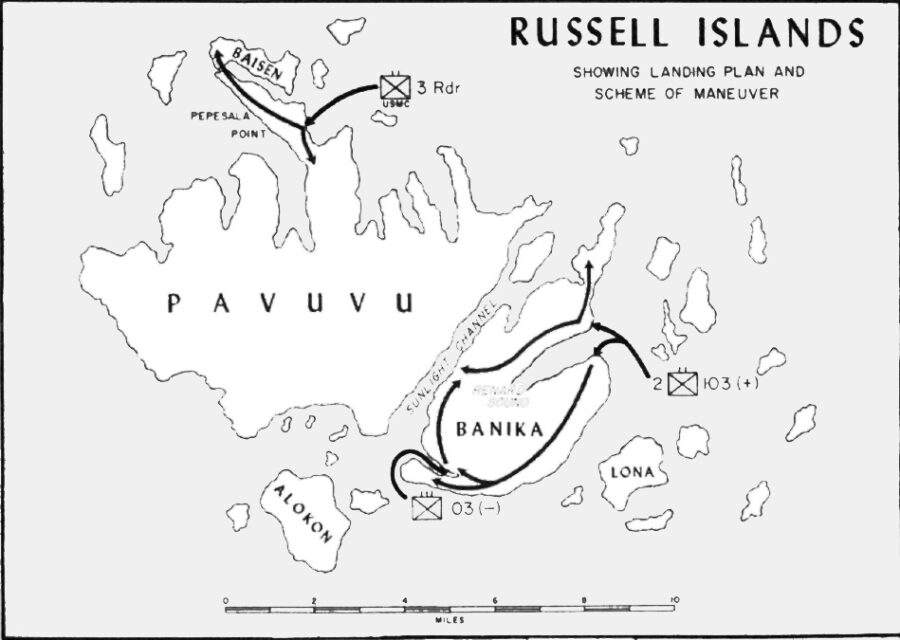
By Patteson Warrick
Lengakiki, Honiara
As Solomon Islands reflects on the significant event of the Battle of Guadalcanal two months ago, it is timely to shed light on Operation Cleanslate, carried out on February 21, 1943.
This critical operation involved a joint effort by Australia and the United States, securing the Russell Islands and transforming them into a strategic base for future offensives in the Pacific.
The Allied success in this operation owes much to the contribution of the local communities, who endured their lands being repurposed for military operations.
It is time to ask: Is there a way for Australia and the United States to say thank you to the people of the Russell Islands for their sacrifices during this operation?
When the Allied forces first landed on the Russell Islands, the population was relatively small, with fewer than 400 people residing on the islands.
The peaceful communities were soon joined by around 5,000 American troops.
By the end of the operation, the number of personnel stationed on the islands had ballooned to approximately 60,000 men, a staggering figure that is even larger than the current population of the Russell Islands.
This transformation had far-reaching effects on the environment, the people, and the culture of the islands.
Operation Cleanslate was part of the larger Allied strategy to consolidate control over the Solomon Islands after the hard-won victory on Guadalcanal.
The Russell Islands, lying to the northwest of Guadalcanal, were identified as a key staging point for future assaults on New Georgia and Bougainville. The first wave of landings, led by Major General John H. Hester of the U.S. Army, saw the establishment of critical infrastructure, including airfields, supply depots, and radar stations on Pavuvu and Banika Islands.
These facilities were rapidly constructed under the supervision of Lieutenant Colonel Archie H. Sims, with support from Australian Captain Robert Rankin and Brigadier Edmund Herring.
While the military transformation of the islands served the immediate goals of the Allied forces, the legacy of the operation left lasting effects on the local population and environment.
As the soldiers withdrew, they left behind various military remnants, from abandoned equipment to unexploded ordnance (UXO).
These war relics still pose a danger today, as unexploded bombs and ammunition remain scattered across the islands, a silent threat to local communities.
Unfortunately, people have already lost their lives from these UXOs.
The environment also bore the burden of the military occupation.
The extensive infrastructure development altered the natural landscape, with forests cleared for airstrips, military bases, and supply depots.
This led to deforestation and soil degradation, while remnants of fuel spills and other pollutants introduced during the operation have had long-term impacts on the islands’ ecosystems up to this very day.
The environmental disruption has affected the livelihoods of the Russell Islanders, whose traditional way of life is closely tied to the land and sea.
Culturally, the influx of tens of thousands of foreign soldiers brought sudden and significant changes.
The small, tight-knit communities were exposed to a flood of foreign ideas, customs, and practices, altering the local culture in ways that are still felt today.
The introduction of foreign goods and technology—while beneficial in some ways—also disrupted the traditional subsistence economy and the social fabric of the Russell Islanders.
In the years following the war, the people had to adapt to the remnants of the foreign presence that had left indelible marks on their way of life.
In this light, we must ask: Has enough been done to thank the people of the Russell Islands for their contribution to this pivotal chapter of the war?
While we honor the names of Major General Hester, Captain Lawrence H. Frost, Captain Rankin, and Lieutenant Colonel Sims, we must also recognize the local communities who bore the weight of war on their lands.
The physical and cultural landscape of the Russell Islands was forever altered by the presence of the Allied forces and the waste they left behind.
Australia and the United States, key players in Operation Cleanslate, have continued to maintain strong ties with the Solomon Islands.
However, wouldn’t a more formal recognition of the Russell Islands’ contribution be a meaningful gesture of appreciation?
Whether through development programs by supporting NGOs/CBOs, environmental restoration projects, scholarships, or historical preservation efforts, such an acknowledgment could serve as a lasting testament to the people who supported this operation.
The Russell Islands provided a vital base for the Allies to wage war in the Pacific.
As we celebrate military victories and honor fallen soldiers, we must also remember the people who made these victories possible.
I believe it is time to formally recognize and thank the people of Russell Islands for their sacrifices and for the lasting impacts they continue to endure up to this day.
